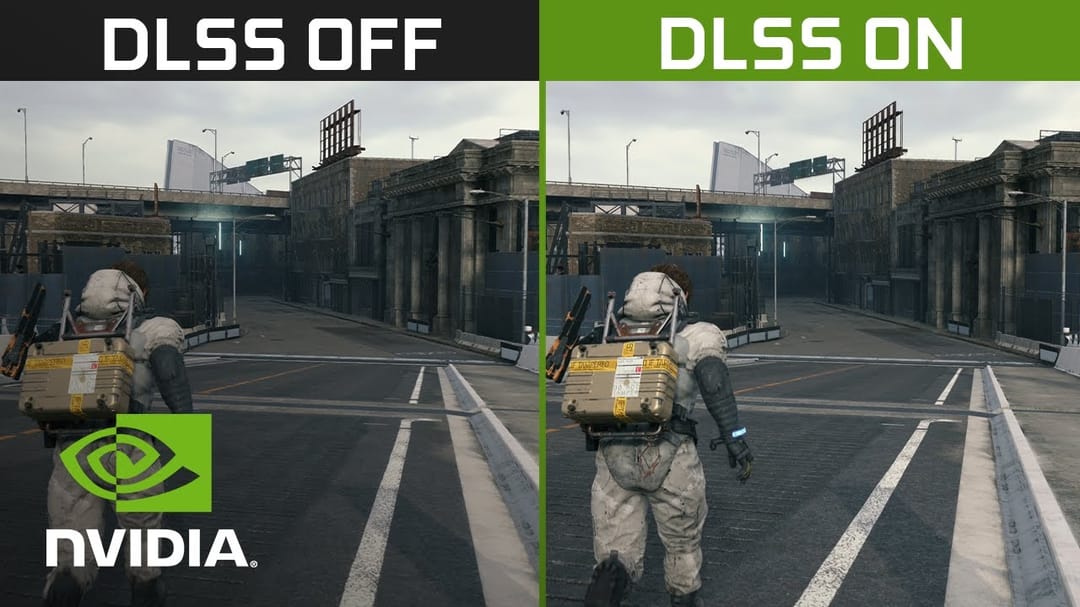Texture Fidelity Remains Razor-Sharp
TAA Blur Eliminated Across All Modes
DLSS 4’s upgraded reconstruction logic removes the soft haze typical of older TAA and early DLSS builds. Whether you select Quality, Balanced, or Performance, textures maintain near-native sharpness at 4K, while grain introduced during motion is minor even at 1080p.
Minimal Loss When Stepping Down
At 4K the Performance preset shows virtually zero texture loss versus Quality. At 1440p and 1080p small specks of grain appear only in fast-moving scenes; Balanced remains practically indistinguishable from Quality for day-to-day play.
Motion Stability, Wires & Pixel-Level Detail
Rock-Solid Stability in High-Speed Scenes
Car chases or rapid camera pans exhibit comparable stability on Quality and Performance at 4K. Fine wires and power lines shimmer slightly more at 1440p and 1080p when dropping to Performance, but Balanced holds firm.
Disocclusion Artifacts Scale With Resolution
When hidden geometry is revealed, Performance produces longer blur trails and added pixelation—most noticeable at 1080p. Balanced cuts these artifacts in half; Quality keeps them faint enough to ignore on large screens.
Fine Detail Rendering: Hair, Particles & Transparency
Hair Stays Natural
Character editors at 4K show barely any downgrade from Quality to Performance. At lower resolutions, Performance can look grainy on flowing strands; Balanced offers a sweet spot without frame-rate sacrifice.
Particle Effects Survive Downscaling
Rain, snow, and spores retain definition even in 4K Performance. Only at 1440p and below does Performance introduce background grain behind dense effects; Quality and Balanced remain crystal-clear.
Transparency and Holograms
Holographic UI elements and fine mesh patterns pixelate under 1080p Performance. Stationary transparencies look clean across presets, but rotating or scrolling elements benefit from Quality at lower resolutions.
Vegetation, Fences & Other Difficult Geometry
Grass Is the First Casualty
Wind-blown grass turns noticeably grainier as you shift from Quality to Performance, especially at 1080p. At 4K, Balanced preserves most blade detail; Performance looks lightly upscaled but usable.
Trees & Branches Are Safer
Leafy canopies and thicker branches hold detail in all modes. Bare branches may alias in Performance, yet remain stable in Balanced.
Fences, Railings & Mesh
Overlapping wire fences shimmer under Performance, particularly at 1080p. Quality resolves the mesh cleanly; Balanced curbs aliasing enough for comfortable play at 1440p and 4K.
Performance Gains vs. Visual Cost
Typical Frame-Rate Boosts
Each preset drop—Quality → Balanced → Performance—yields roughly 10-15 % higher FPS at GPU-limited resolutions. If the shift nets zero uplift, you are CPU-bound; keep the higher preset.
When Lower Modes Make Sense
• GPU-heavy 4K titles: Performance or Balanced delivers free FPS with little quality penalty.
• Fast-paced shooters: Balanced at 1440p secures extra frames without distracting shimmer.
• 1080p e-sports: Stick to Quality; lower modes rarely justify the artifact trade-off.
Resolution-Specific Cheat Sheet
|
Output Resolution
|
Best Everyday Preset
|
Use Lower Preset When…
|
|
4K (2160p)
|
Balanced
|
Chasing >15 % FPS, grass quality acceptable
|
|
1440p
|
Quality
|
Limited GPU headroom—drop to Balanced only
|
|
1080p
|
Quality
|
Rarely—Balanced if game lacks fine detail
|
Quick Q&A
Q1: Does DLSS 4 Performance add blur compared to Quality?
No. Texture sharpness stays intact; the main drawbacks are increased grain in grass, transparencies, and disocclusion trails.
Q2: How much FPS does each preset step unlock?
Expect a 10–15 % boost per step at GPU-bound settings, especially at 4K. Gains shrink or disappear if your CPU is the bottleneck.
Q3: Which games need Quality at 1080p?
Titles heavy on fine geometry—dense grasslands, intricate wire meshes, or holographic HUDs—benefit most from staying on Quality at lower resolutions.

